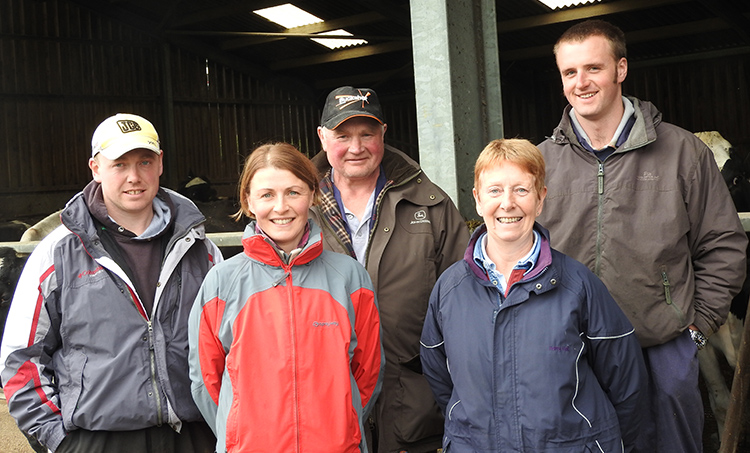
Efficiency focus drives family dairy farm forward
Measuring and monitoring herd performance as a means of tracking farm efficiency is helping one west Yorkshire dairy farm to sustain consistent and significant improvements whilst simultaneously reducing its carbon footprint.
At Hazel Slack Farm near Ripponden, where the Clarkson family milk 160 all-year-round calving Holsteins, annual farm assessments are providing essential focus, with most progress being seen in the last five years in feed rate, fertility and fertiliser use.
The assessments are part of milk processor Arla’s Sustainable Dairy Farming initiative and are carried out by Alltech E-CO₂. An annual farm visit generates a detailed report that charts current performance against earlier years and also benchmarks the business against others. It also provides advice on how to continue progress.
“We are able to show that, over the five years since the farm began carrying out assessments, efficiency has improved from 1,379g of CO₂ equivalents per litre to a level of 1,053g/CO₂e/litre,” explains Victoria Roberts of Alltech E-CO₂. “This is a significant improvement, taking the farm from above the national average (1,230g/CO₂e/litre) to well below it.
“The reports detail the specific areas where improvements have been made, and also where further input is required in order to increase efficiency even further.”
J & JR Clarkson have been owner occupiers at Hazel Slack Farm since 1960, with the Holstein Friesian herd now averaging 9,500 litres at 4% butterfat and 3.4% protein. The farm extends to around 300 acres, rising to 1,000ft and bordering moorland. The system is typical of many UK dairy farms, calving all year round, with high yielders predominantly fed inside on a total mixed ration and with the low yielding group outside grazing.
Growing quality grass and good grassland management have become priorities and have been one of the main areas of improvement. Another development that is reducing bought-in fertiliser requirements is effective use of slurry, which is enhanced by applying an additive as well as the use of a trailing shoe application system.
Herd fertility is another area where there has been demonstrable progress in recent years, with calving interval now down to 390 days from a level of more than 400 days. Mr Clarkson gives due credit to his herdsman Tom Clapham, who is applying the necessary attention to detail and doing the majority of the DIYAI.
There is also a focus on replacement heifer rearing on the farm, with calves being reared to reach bulling weight earlier, to meet a target first calving age of two years.
All-in-all, the application of several relatively small adjustments in management is adding up to significant improvements in farm efficiency, and that is making this family farm a more sustainable venture.
Caption – Clarkson family:
Jim and Jane Clarkson with son Richard (far left), daughter Jenny (second left) and herdsman Tom Clapham (far right).